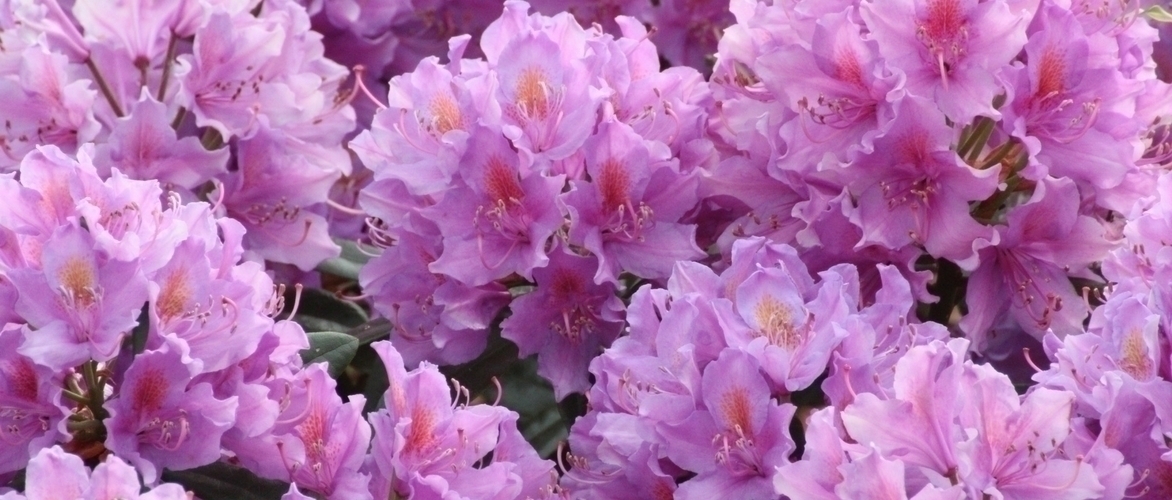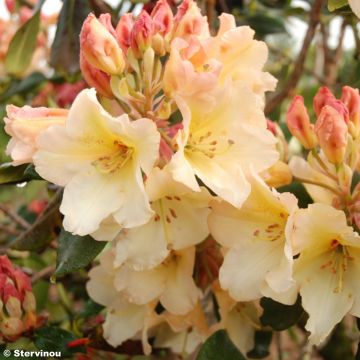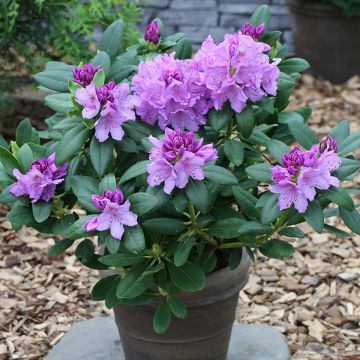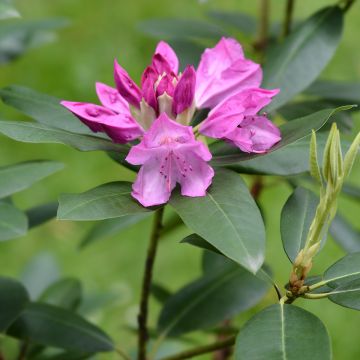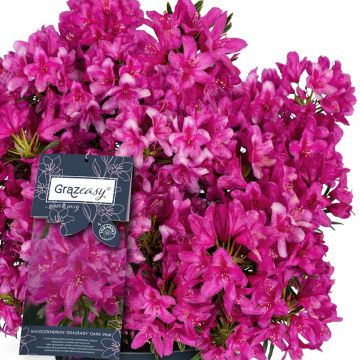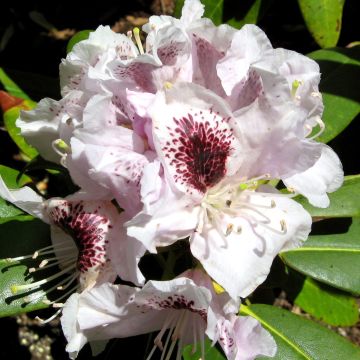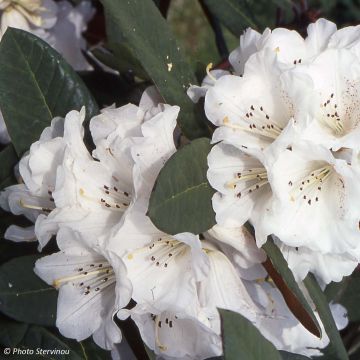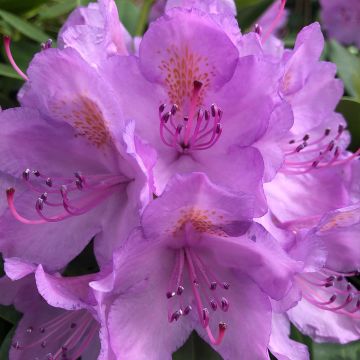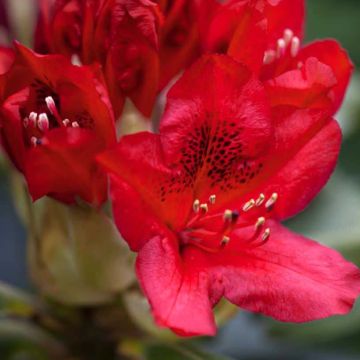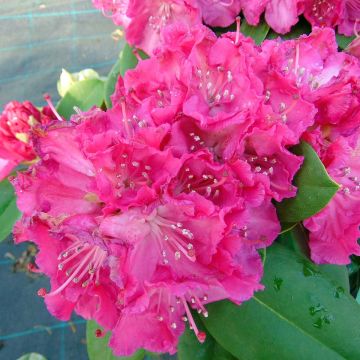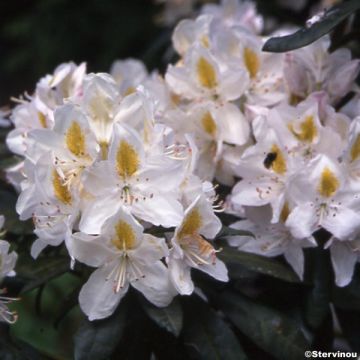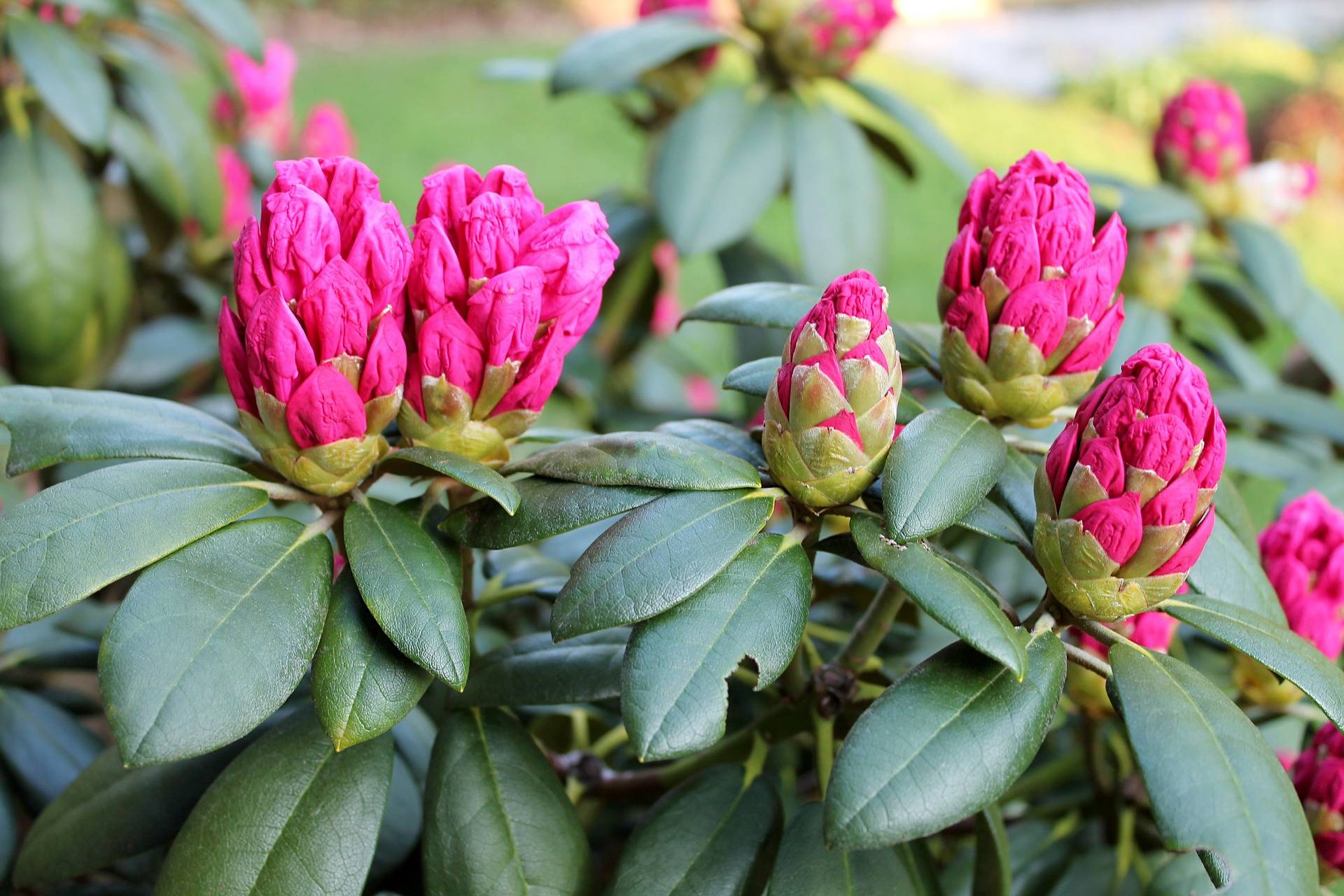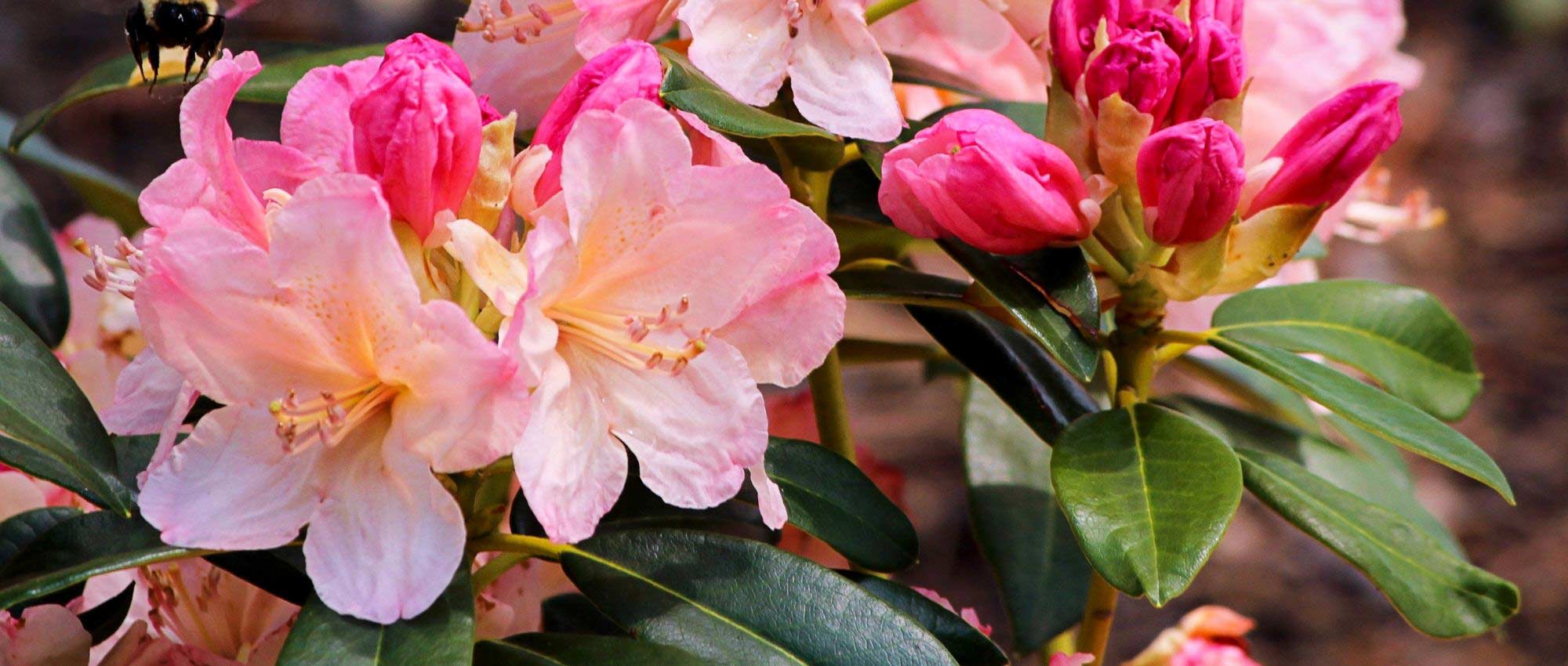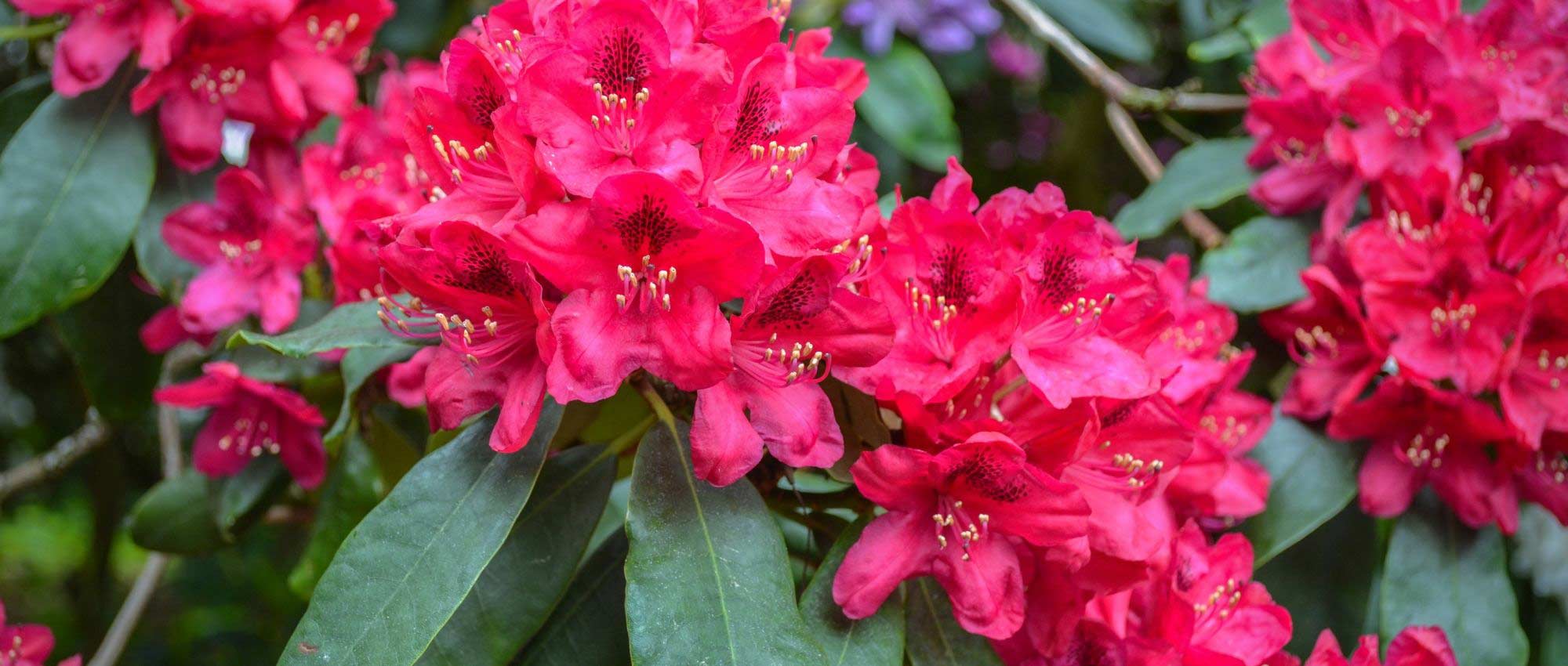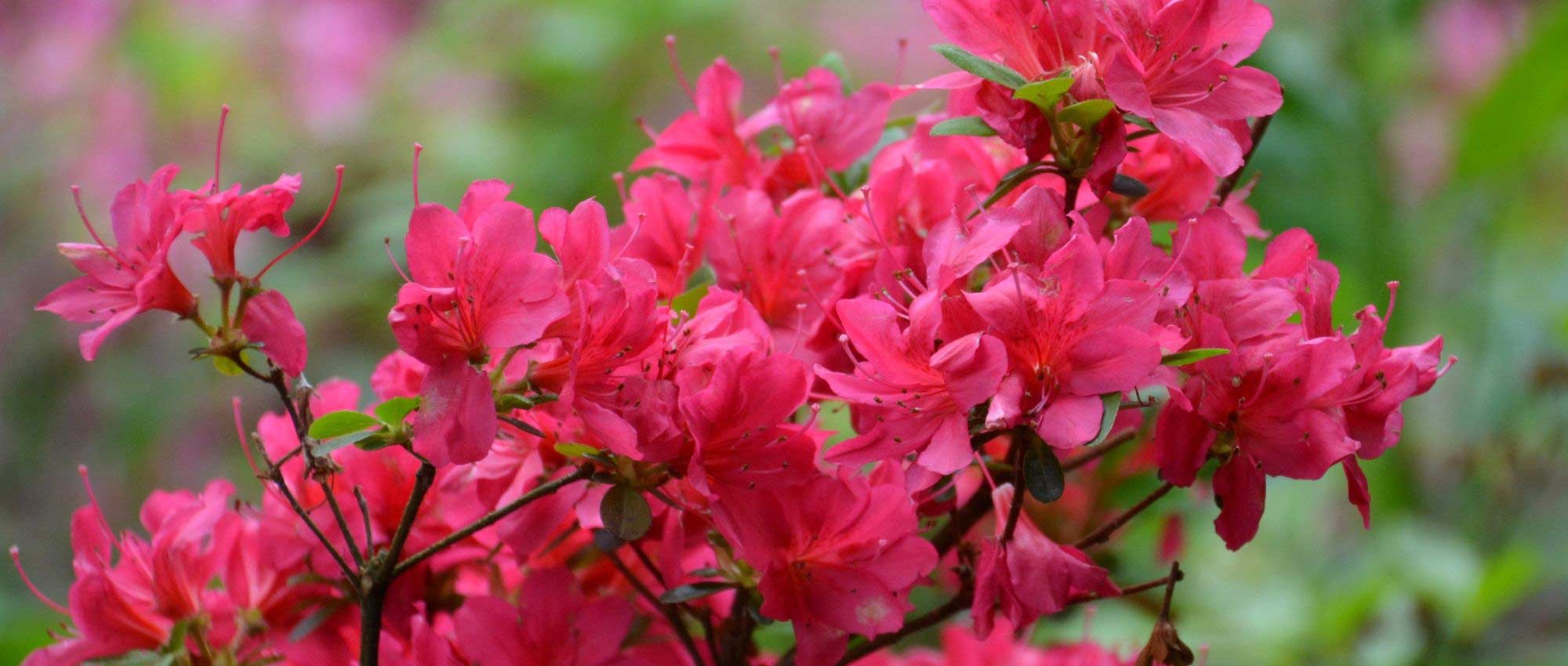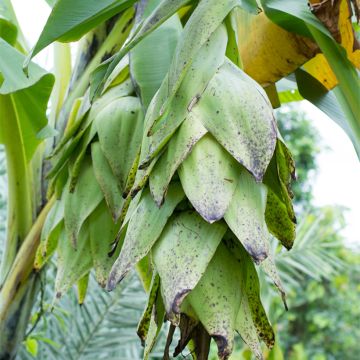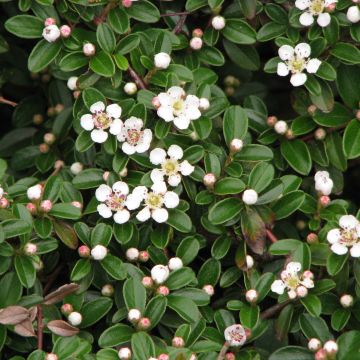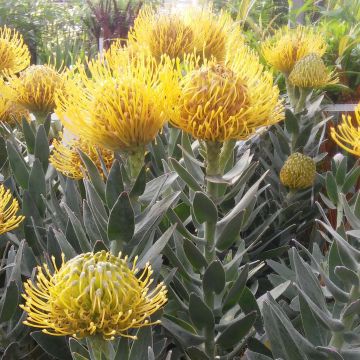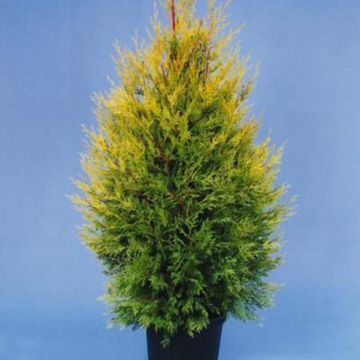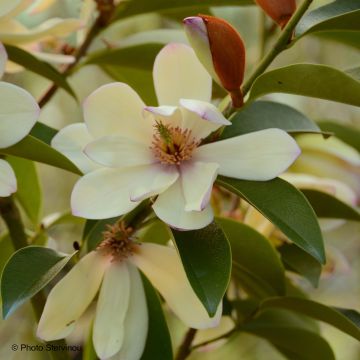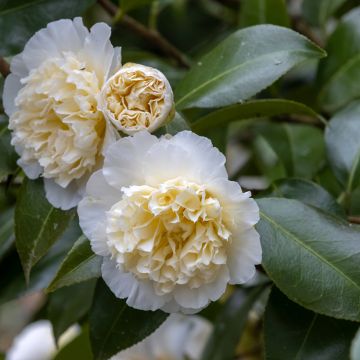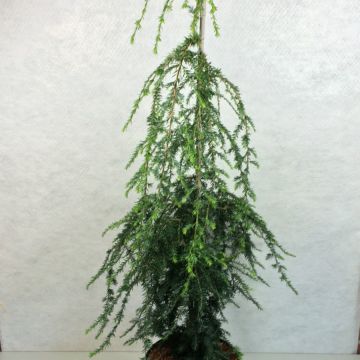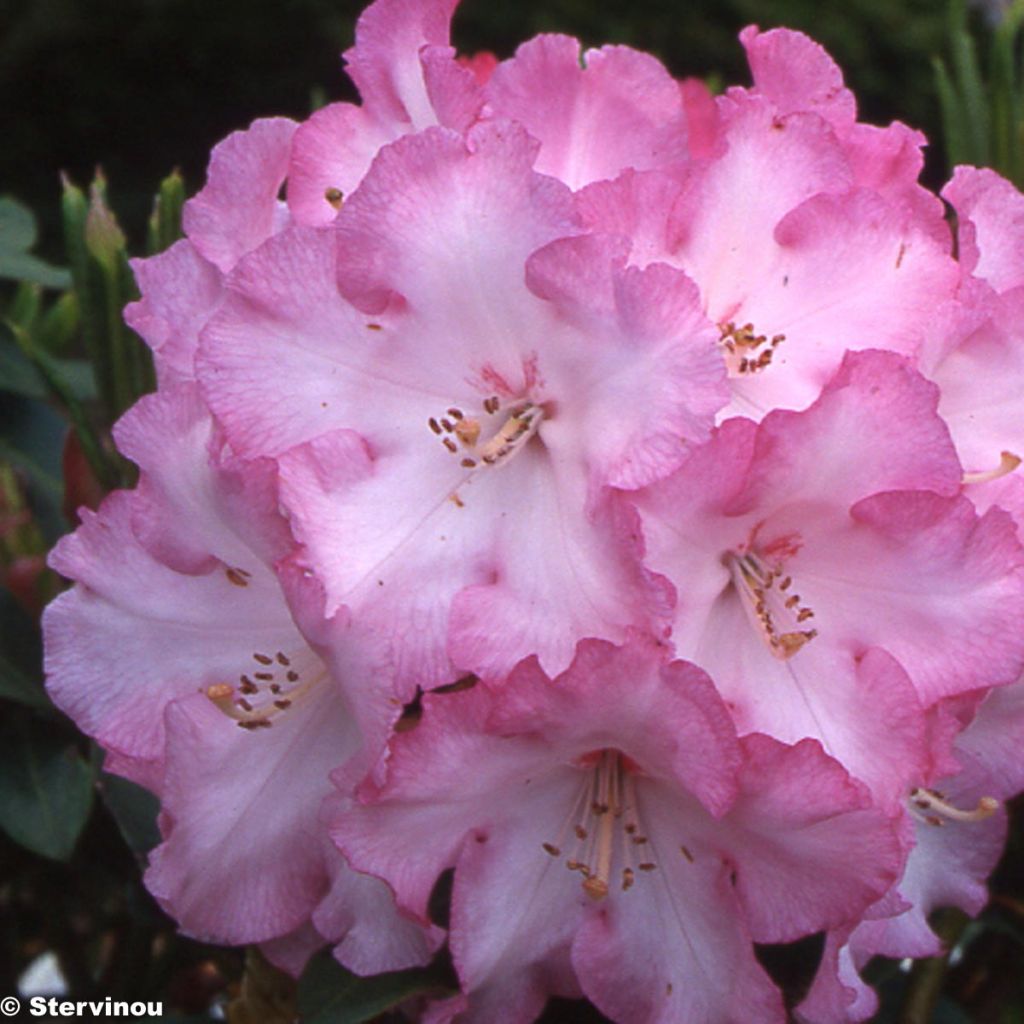

RHODODENDRON Lem s monarch - Grand Rhododendron
Rhododendron Lems Monarch
Rhododendron Lem's Monarch
Rhododendron
Vigorous young plant transplanted in partial shade under large maple trees, which has taken well. No flowers the first year, but this rhododendron has developed nicely in anticipation of flowering next spring, I hope.
Martine , 04/08/2025
Special offer!
Receive a €20 voucher for any order over €90 (excluding delivery costs, credit notes, and plastic-free options)!
1- Add your favorite plants to your cart.
2- Once you have reached €90, confirm your order (you can even choose the delivery date!).
3- As soon as your order is shipped, you will receive an email containing your voucher code, valid for 3 months (90 days).
Your voucher is unique and can only be used once, for any order with a minimum value of €20, excluding delivery costs.
Can be combined with other current offers, non-divisible and non-refundable.
Home or relay delivery (depending on size and destination)
Schedule delivery date,
and select date in basket
This plant carries a 24 months recovery warranty
More information
We guarantee the quality of our plants for a full growing cycle, and will replace at our expense any plant that fails to recover under normal climatic and planting conditions.

Would this plant suit my garden?
Set up your Plantfit profile →
Description
Delicate yet impressive in size, the Rhododendron 'Lem's Monarch' is a spectacular American hybrid that stands out for its huge flowers, grouped in inflorescences up to 30cm, its soft marginate pink colour, its long flowering period, and its adaptability!
Created by an enthusiast from the Seattle region in the 60s, the Rhododendron 'Lem's Monarch' is a truly exceptional bush. Each of its flowers measures from 10 to 12cm (4 to 5in) wide, and these corollas are grouped in conical inflorescences measuring 30cm (12in) in height! Initially carmine red in buds, the petals are a light pink marginated with bright pink on the inside. Their delicate texture resembles satin or porcelain. Flowering occurs in May, at the latest early June. Supposed to be triploid, fertilization of the rhododendron 'Lem's Monarch' is difficult: its flowers thus fade less quickly, giving it exceptional flowering both in terms of duration and dimensions.
Despite its titanic flowers, this bush remains of reasonable proportions: it will form a large bush 1.75m (6ft) tall with a width of about 2.5m (8ft) after 10 years. The evergreen foliage is abundant and sturdy, a superb dark green with a lighter central vein. It remains on the plant for two years. Each leaf measures 14 to 20cm (6 to 8in) long. Hardy down to -15°C (5°F) to -20°C, this Rhododendron tolerates sun and wind quite well and has a powerful root system that allows it to adapt to more challenging conditions than most other rhododendrons. However, it remains a plant that prefers acidic, light, airy, moist, and humus-rich soil in partial shade.
The Rhododendron 'Lem's Monarch' will be ideal in a bed or as a standalone plant. It will decorate your garden all year round and animate it in spring with its numerous bicoloured flowers in light and dark pink. Plant it alongside other acid-loving plants such as Magnolias, Pieris, Heather, Kalmias, Azaleas, and Japanese Maples.
Rhododendron Lems Monarch in pictures
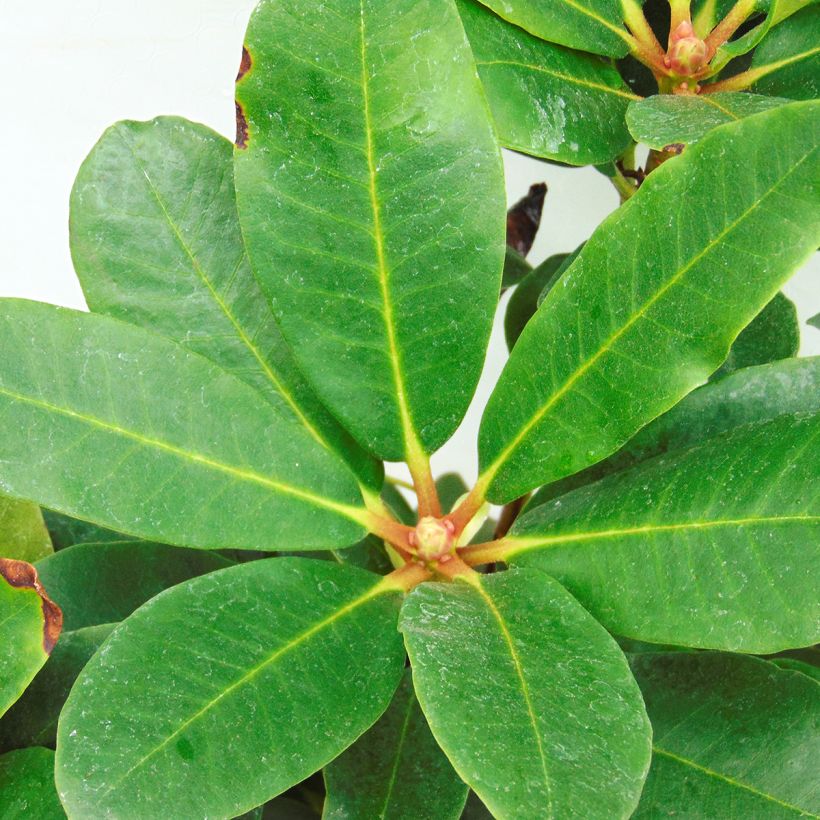

Plant habit
Flowering
Foliage
Botanical data
Rhododendron
Lem's Monarch
Ericaceae
Rhododendron
Cultivar or hybrid
Other Large Rhododendrons
View all →Planting and care
Plant the Rhododendron 'Lem's Monarch' in a sunny, semi-shaded or shaded position, protected from cold and drying winds, in a moist, humus-rich and light soil with an acidic tendency. Like all heathland plants, it does not tolerate limestone soils or heavy soils that become waterlogged in winter. Dig a hole three times larger than the pot volume. Soak the root ball in non-limestone water and plant the bush at the level of the collar, in a mixture composed of leaf compost, gravel or pumice and loam. Water thoroughly and keep the soil moist in the summer. Azaleas and Rhododendrons have a shallow root system. As a result, they are sensitive to long periods of drought. That is why humus-rich soil and abundant watering during dry periods are recommended. In addition, this root system is not very strong, which is why it is essential to lighten heavy soils with draining materials (gravel, pumice, clay pellets) at planting. Apply a mulch of shredded pine bark at the base of the bush every spring to keep the soil cool while maintaining an acidic pH. Maintenance consists of cutting off faded flowers in summer and clearing the plant of dead branches. Azaleas and Rhododendrons can sometimes be attacked by weevils that eat the edges of leaves and rootlets, as well as by the famous "rhododendron beetle" which does not often cause severe damage. There are very effective natural solutions against weevils. Yellowing of leaves (chlorosis) in Rhododendrons indicates poor assimilation of iron from the soil and leads to premature death of the plant. While limestone is often the cause, poorly drained soil or a deeply planted root ball can also explain the phenomenon.
Planting period
Intended location
Care
Planting & care advice
-
, onOrder confirmed
Reply from on Promesse de fleurs
Similar products
Haven't found what you were looking for?
Hardiness is the lowest winter temperature a plant can endure without suffering serious damage or even dying. However, hardiness is affected by location (a sheltered area, such as a patio), protection (winter cover) and soil type (hardiness is improved by well-drained soil).

Photo Sharing Terms & Conditions
In order to encourage gardeners to interact and share their experiences, Promesse de fleurs offers various media enabling content to be uploaded onto its Site - in particular via the ‘Photo sharing’ module.
The User agrees to refrain from:
- Posting any content that is illegal, prejudicial, insulting, racist, inciteful to hatred, revisionist, contrary to public decency, that infringes on privacy or on the privacy rights of third parties, in particular the publicity rights of persons and goods, intellectual property rights, or the right to privacy.
- Submitting content on behalf of a third party;
- Impersonate the identity of a third party and/or publish any personal information about a third party;
In general, the User undertakes to refrain from any unethical behaviour.
All Content (in particular text, comments, files, images, photos, videos, creative works, etc.), which may be subject to property or intellectual property rights, image or other private rights, shall remain the property of the User, subject to the limited rights granted by the terms of the licence granted by Promesse de fleurs as stated below. Users are at liberty to publish or not to publish such Content on the Site, notably via the ‘Photo Sharing’ facility, and accept that this Content shall be made public and freely accessible, notably on the Internet.
Users further acknowledge, undertake to have ,and guarantee that they hold all necessary rights and permissions to publish such material on the Site, in particular with regard to the legislation in force pertaining to any privacy, property, intellectual property, image, or contractual rights, or rights of any other nature. By publishing such Content on the Site, Users acknowledge accepting full liability as publishers of the Content within the meaning of the law, and grant Promesse de fleurs, free of charge, an inclusive, worldwide licence for the said Content for the entire duration of its publication, including all reproduction, representation, up/downloading, displaying, performing, transmission, and storage rights.
Users also grant permission for their name to be linked to the Content and accept that this link may not always be made available.
By engaging in posting material, Users consent to their Content becoming automatically accessible on the Internet, in particular on other sites and/or blogs and/or web pages of the Promesse de fleurs site, including in particular social pages and the Promesse de fleurs catalogue.
Users may secure the removal of entrusted content free of charge by issuing a simple request via our contact form.
The flowering period indicated on our website applies to countries and regions located in USDA zone 8 (France, the United Kingdom, Ireland, the Netherlands, etc.)
It will vary according to where you live:
- In zones 9 to 10 (Italy, Spain, Greece, etc.), flowering will occur about 2 to 4 weeks earlier.
- In zones 6 to 7 (Germany, Poland, Slovenia, and lower mountainous regions), flowering will be delayed by 2 to 3 weeks.
- In zone 5 (Central Europe, Scandinavia), blooming will be delayed by 3 to 5 weeks.
In temperate climates, pruning of spring-flowering shrubs (forsythia, spireas, etc.) should be done just after flowering.
Pruning of summer-flowering shrubs (Indian Lilac, Perovskia, etc.) can be done in winter or spring.
In cold regions as well as with frost-sensitive plants, avoid pruning too early when severe frosts may still occur.
The planting period indicated on our website applies to countries and regions located in USDA zone 8 (France, United Kingdom, Ireland, Netherlands).
It will vary according to where you live:
- In Mediterranean zones (Marseille, Madrid, Milan, etc.), autumn and winter are the best planting periods.
- In continental zones (Strasbourg, Munich, Vienna, etc.), delay planting by 2 to 3 weeks in spring and bring it forward by 2 to 4 weeks in autumn.
- In mountainous regions (the Alps, Pyrenees, Carpathians, etc.), it is best to plant in late spring (May-June) or late summer (August-September).
The harvesting period indicated on our website applies to countries and regions in USDA zone 8 (France, England, Ireland, the Netherlands).
In colder areas (Scandinavia, Poland, Austria...) fruit and vegetable harvests are likely to be delayed by 3-4 weeks.
In warmer areas (Italy, Spain, Greece, etc.), harvesting will probably take place earlier, depending on weather conditions.
The sowing periods indicated on our website apply to countries and regions within USDA Zone 8 (France, UK, Ireland, Netherlands).
In colder areas (Scandinavia, Poland, Austria...), delay any outdoor sowing by 3-4 weeks, or sow under glass.
In warmer climes (Italy, Spain, Greece, etc.), bring outdoor sowing forward by a few weeks.






























